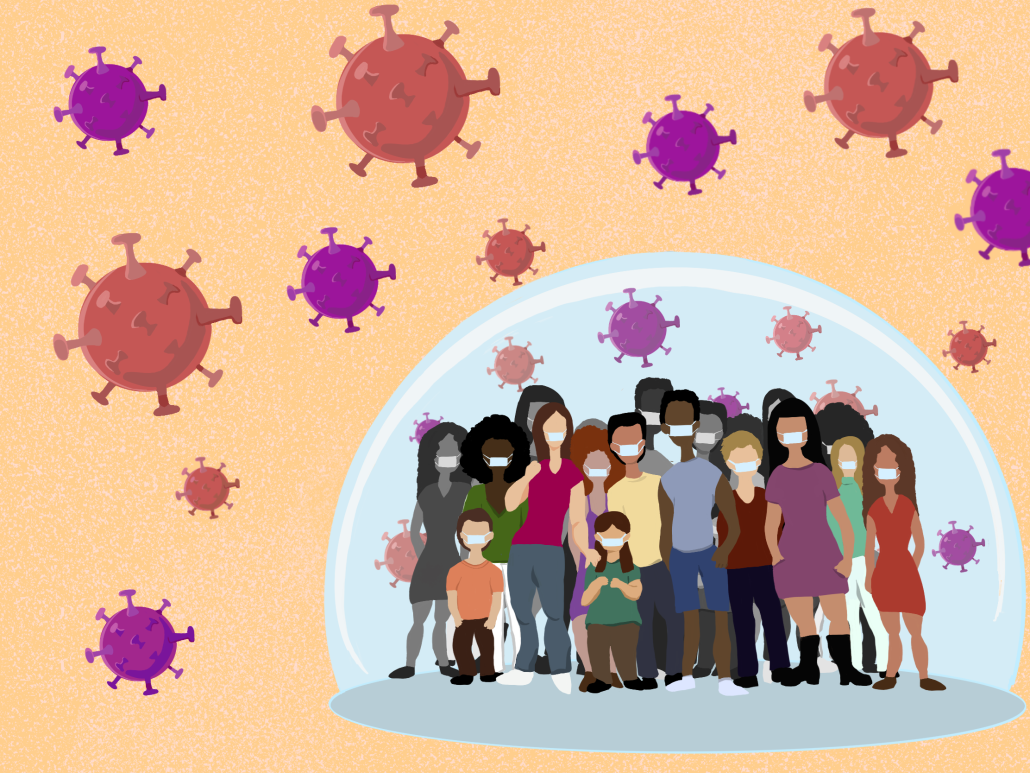Herd immunity unlikely in L.A. County

A study conducted by USC researchers discovered that, despite high antibody rates in the population, Los Angeles County saw coronavirus surges due to the delta and omicron variants, suggesting that herd immunity is unlikely in the area.
If a large enough portion of the population in a given area develops immunity to a disease, the spread of it will decrease and the area would achieve herd immunity. However, despite the high levels of coronavirus protection, via previous infection or vaccination, L.A. County still underwent periods of mass infection since April 2021.
“Despite the fact that such a high fraction of the population had COVID antibodies, we experienced a surge in infections,” Director of the COVID Initiative at the USC Schaeffer Center for Health Policy & Economics Dr. Neeraj Sood said. “It’s unlikely this disease is going away. It’s more likely that it is just going to be an endemic disease and it is going to stay with us.”
The study — a Los Angeles pandemics surveillance cohort study published Jan. 20 in JAMA Network Open — is part of a larger project by the COVID-19 Pandemic Research Center at USC.
Given findings from the studies, it’s important for schools and universities where the proportion of vaccinated individuals is high, such as USC, to continue being mindful and cognizant of the policies it keeps in place, or chooses to implement, moving forward. Dr. Olivier Pernet, one of the co-authors of the study, said there is no “one size fits all” solution.
“USC is massively vaccinated … which makes it extremely difficult for the virus to just spread, but we all know people who got infected despite being vaccinated,” Pernet said. “You cannot have your policies just focusing on only one aspect. You still need to have all the systems [such as wearing masks and social distancing] to prevent spread.”
The study initiative was motivated by the results of an April 2020 study that showed that actual infection numbers in L.A. County were higher than its reported cases.
“We’ve been trying to repeat that study to just understand how many people in the population have some protection from COVID, either because they were infected with COVID in the past or now because they have vaccinations,” Sood said.
The researchers discovered that in April 2021, one year after the original CPRC, around 72% of adults in L.A. County were vaccinated or had receptor binding domain antibodies for the coronavirus from prior infection. Nearly all unvaccinated participants infected with the coronavirus in the past still had receptor binding domain antibodies.
The study also found that the coronavirus-related death rate per 100,000 individuals is four times higher in low-income areas compared to high-income areas. The same pattern shows in the presence of coronavirus antibodies in unvaccinated individuals — many more people in low-income areas of L.A. have coronavirus antibodies, compared to high-income areas among the unvaccinated, Sood said.
“We know that no certain population actually has yet achieved a high enough level of vaccination, and so that is why we want to focus on this minority population to help them to be able to protect better against COVID infections,” said Dr. Chun Nok Lam, one of the co-authors of the study.
Other co-authors of the story include Howard Hu, Angela Klipp, Rani Kotha and Andrea Kovacs.
“In April, we were kind of thinking: ‘If we do something now, we just have to do it for a few months and then the pandemic will be over,’” Sood said. “Now, we’ve got to think: ‘Whatever we do, we will be doing that for a long time, and so does it make sense to implement that policy or not?’”

